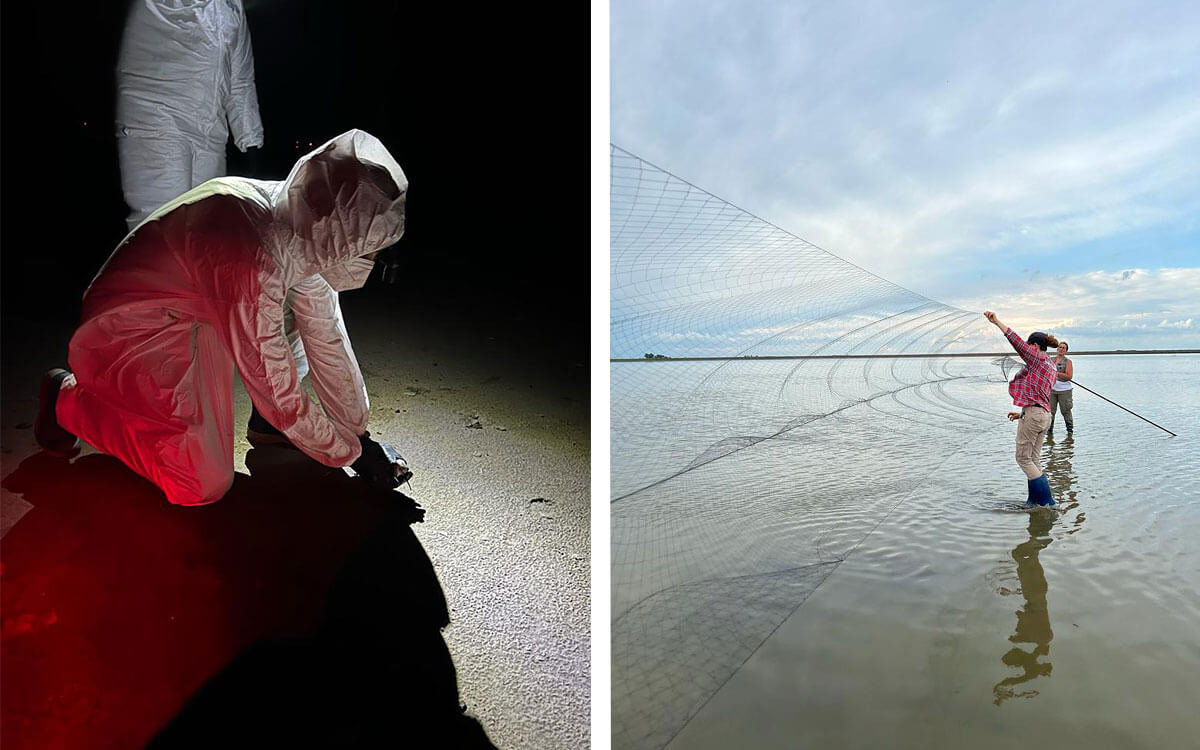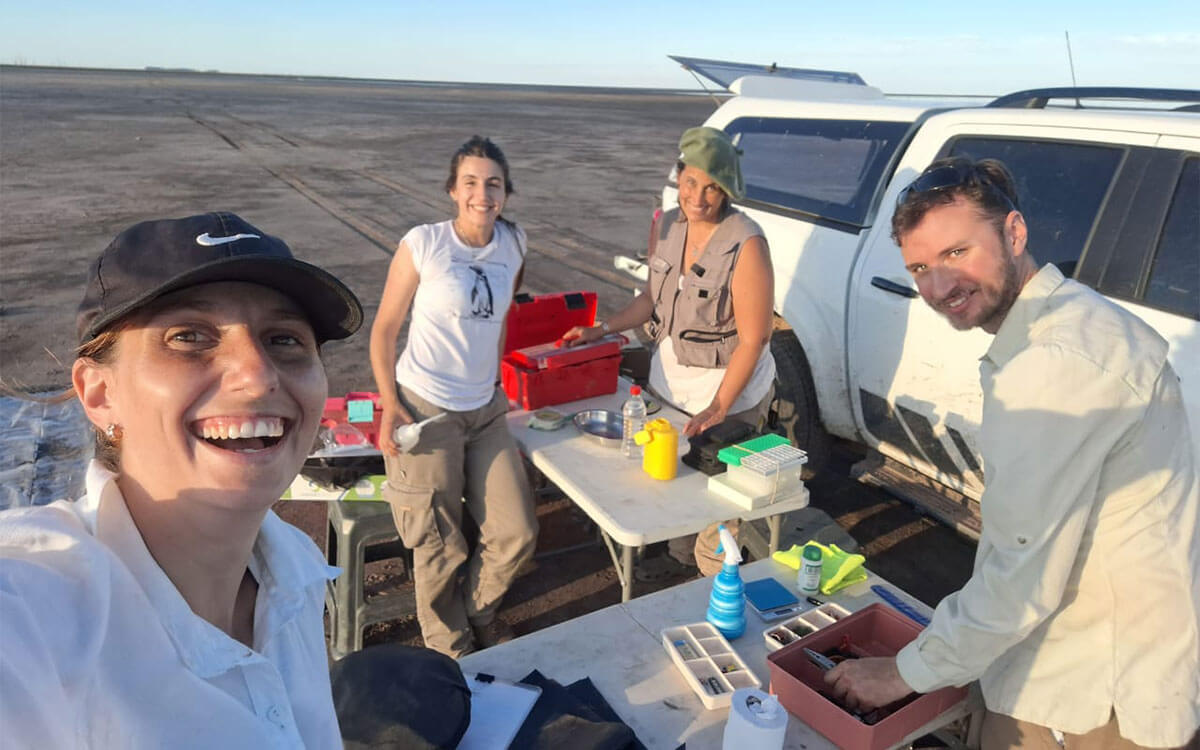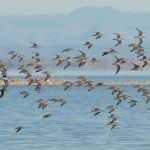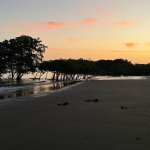By Gisela Antonuccio
Translated to English by WHSRN Executive Office
My participation in the “Universitarixs en Experiencia Ambientalia” program, led by the Western Hemisphere Shorebird Reserve Network (WHSRN), and the Fundación Líderes de Ansenuza in Mar Chiquita, Córdoba, Argentina, began in August 2023 and has marked a “before and after” in both professionally and personally terms.
I am Gisela Antonuccio, a student of Biological Sciences at the National University of Córdoba. Until then, I had not taken any courses that introduced me to the world of shorebirds and the importance of their conservation. Therefore, most of my knowledge about these issues came from Universitarixs en Ambientalia. The program included virtual meetings with professionals from different fields, which not only promoted networking and the possibility of learning from their experience but also guided us in the development of a conservation project that we had to carry out.

Gisela during field work. Photos courtesy of Gisela Antonuccio
In my case, this project focused on the conservation of the Lesser Yellowlegs (Tringa flavipes), which allowed me to deepen my knowledge and learn by doing. This task was very challenging for me because it required knowledge that I had not yet acquired, so there were frustrations along the way, but I always did my best and kept on trying.
This attitude was partly due to the training offered by the program, which gave me the tools to achieve my goals and the experiences I had the opportunity to participate in, such as the Leadership Workshop and the Boot Camp in Laguna del Plata, Marull, Córdoba. These events allowed me to get to know the lagoon and people who inspired me, both volunteers from the Foundation and young participants from the Ansenuza region.
In addition to the extremely enriching program activities, my dedication and interest in the subject were amply rewarded with awards such as the opportunity to attend the three-day Environmental Leaders Forum in Miramar, to fly over part of the Mar Chiquita Lagoon for an aerial assessment of the wetland, and to participate in a shorebird field campaign with Dr. Natalia Martínez Curci. All of these experiences were incredible and left a deep impression on me on a personal level.
Participating in the campaign with Natalia provided me with a unique learning experience. Not only did I experience the daily life of a professional in the biological sciences, especially in the field, but I also got much closer to the shorebirds, even interacting with them to take measurements and samples. These kinds of activities are very important and exciting for biology students, as they allow us to leave the walls of the faculty and look into our professional future, providing us with valuable tools for it.

Shorebird field campaign crew. Photo: Gisela Antonuccio.
I would like to acknowledge those who hosted me for this experience, for their great willingness to teach me and for showing me the importance of teamwork.
As a result of all these experiences, my interest in the world of birds has grown exponentially. As a result, I enrolled in the Shorebird Conservation Training Program in the Pacific Flyway of the Americas offered by the Western Hemisphere Shorebird Reserve Network (WHSRN). In addition, given my particular interest in the Lesser Yellowlegs and its conservation, I am looking for opportunities and experiences that will allow me to improve my skills to develop conservation projects and bring me even closer to this species.
Finally, I would like to thank Experiencia Ambientalia for the opportunities they have given me and for the wonderful work they do with high school and university students through Universitarixs en Ambientalia. I hope that more students will join the Universitarixs program so that they can grow and experience first-hand the professional roles that biodiversity conservation, and shorebird conservation in particular, has to offer.
Cover Photo: Gisela observing shorebirds. Photo courtesy of Gisela Antonuccio.






